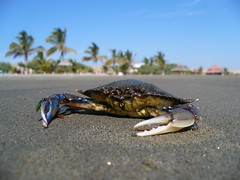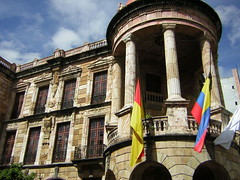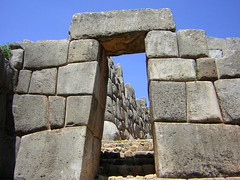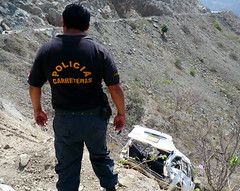As part of the series Explorando Lima, in which I demonstrate the immense diversity that Peru has to offer without even leaving the region of Lima, I visit Antioquia, a town that brightened its future with a lick of paint.
Category: "History"
Origin of Peru
The Spanish had explored Central America and were engaging in expeditions reaching out south-wards along the pacific coast. One ship sailed down past the equator where eventually it reached the mouth of a river. There, the Spaniards on the ship noticed a native man fishing on the coast. Four of the strongest fastest Spanish disembarked some way away while the ship continued and stopped directly off the coast infront of the fisherman. Never having seen anything so strange and wonderful before, the fisherman was transfixed, staring at the ship not paying attention to his surroundings.
Ruins of the Lurín Valley
There have been so many ancient cultures in Peru who have gone on to create so many citadels, farming terraces, temples and pyramids that you often only need to climb the nearest hill to find remnants of their existence. Because of this the vast majority of the country’s archaeological sites are relatively unknown, unvisited and unprotected.
The Huaca Centinela and the Chincha culture
The Huaca Centinela was one of the principle centres of the Chincha people, a group of farmers, fishers and merchants that lived in the fertile valley that is now named for them. The Chincha nation existed in the area between the years 900 and 1495 when they were folded into the Inca Empire.
Earliest Gun Shot Victim in the New World
Puruchuco, the site in Ate I visited not so long ago, has turned up yet more spectacular finds. In the Inca cemetery not far from the ruins in which 2500 mummies have been excavated, archaeologists uncovered what appeared to be a skeleton with a Spanish musket ball hole in the back of its skull. The traces of iron in the skull, from which Spanish muskets balls were made, seems to confirm this.
Dating of artefacts buried alongside the bodies allowed them to date the burials to an extraordinary time – about one year after the Spanish had founded the city of Lima.
Los Tallanes and the city of Narihualá
The Tallán nation was perhaps the first civilisation in the northern Peruvian region of Piura and controlled the area of the Piura and Chira rivers, and the coast. Their society was matriarchal, where the men would do the work and the women would make the decisions. They had their own gods and their own distinct language and customs. They had an economy based on fishing, farming and artisan making and monumental temples of adobe and a system of aqueducts to create fertile farm land.
Piura
The city of Piura in the region of the same name was a pleasant surprise – I had never been here before. It was clean, vibrant and with all the shops you’d find in Lima and not to mention sunny all year-round. It’s a place I wouldn’t mind spending a lot of time in.
Peru and Ecuador: Border Conflicts
The northern Peruvian border has long been a problem for both countries – from as far back as 1828 when land disputes sparked a war between with what was then Gran Colombia and Peru.
Puruchuco
The Inca palace of Puruchuco is one of the most impressive ruins in Lima and is one of the best restored and the first to have been done so properly. It can be found seated at the foot of a cerro in the district of Ate, at the start of the Andes mountain range.
Khipu – Pre-Columbian Communication
It is often said that the Incas and their forebearers didn’t have a writing system — such statements were often made by their conquerors to belittle them. This belief has slowly become the norm. But it seems they did have a system, they just wrote down what they wanted to say with knots on a string rather than symbols on paper. You can see examples in museums across Peru and collections throughout the world.
Electric Train
During Alan García’s first term, in which he destroyed the country’s economy and fled to France with untold millions, his Government began a project to build Lima’s first mass transit system. The project failed and $400 million disappeared into an abyss. Now, with only a few kilometres of the electric train system constructed, there is talk of
finishing it.
Rimac
Cerro San Cristobal overlooks the historic district of Rimac, the other side of the river from the city centre. Never a very wealthy district, it’s first inhabitants were the indigenous from the region, the black population and the poor of the Spanish immigrant community. It became one of the most vibrant parts of the city and the centre for Lima’s entertainment – so much so that the rich of Lima often frequented it’s creole bars and restaurants, not forgetting its bullring. By the 18th it was the bastion of creole culture in Peru and the centre for the arts, music and food. Now with its buildings on the verge of collapse and memories of the Limeños of old fading, it was time to visit this important part of Lima’s history.









